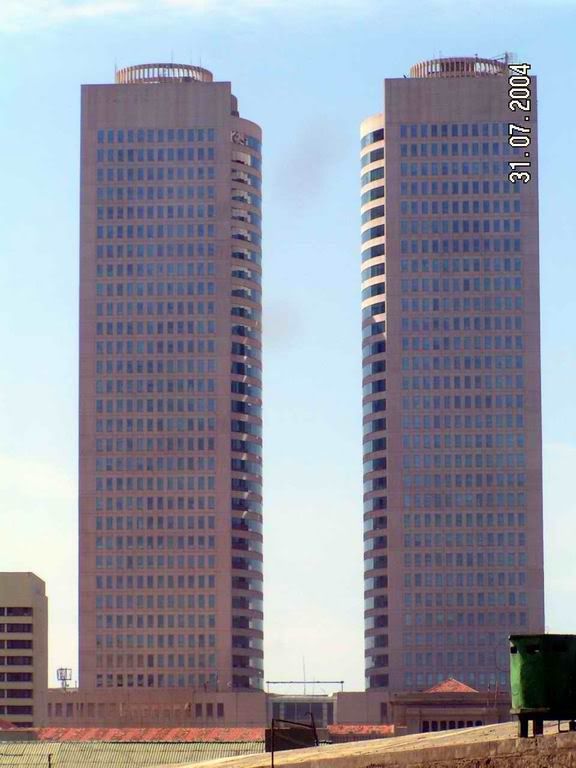Dr. Roland Silva, one of the most notable architects in Sri Lanka, and who is presently the chancellor of the University of Moratuwa writes,
“As architects we are not only disciplined to sip the nectar from the store houses of historical experience and dream the silhouettes of the Sri Lanka of tomorrow but also to translate these visions of a future to the reality of brick and mortar”
- Arct Roland Silva, CIA Vol 1, No 1, Jul-Dec 1972
I believe that this is the attitude that we should foster in order to develop the country. Looking back at Sri Lanka’s construction history the great builders do nothing but amaze us with their ingenuity and skill. The Jethavana, Ruvanweli, Lova maha paya, and the massive brick edifices of Polonnaruwa are just some of the wonders of ancient Lankan architecture
Even though looking at the present we can see a slight increment in construction technology, we should realize that we are still to surpass the 40 storey barrier set by World Trade Center in the early 90’s.
The Empire Residencies twin towers of 39 stories and 37 stories which have lately taken to the habit of adorning the havens, cannot really be thought of as competition to the twins at echelon square (WTC) since the first 10 floors are dedicated to parking.

Empire Residencies (Image stolen from here)
If The Suchir NEB project funded by an Indian company completes construction, it will become the tallest towers in the Sri Lankan sky scape, boasting of 3 towers, the tallest being a 70 storied apartment block and the shortest of a 40 storied tower dedicated to offices.
The Diamond tower proposal too was an ambitious project that was blown out of proportions way before anything concrete on the project was ever started. A US$ 150 million investment and scheduled to be completed in 2011, The 246 -metre tall tower consisting of 59 floors and 1.5 million square feet, would have set a new standard in the Colombo Sky line.
The sad story of the celestial tower will no doubt be echoed in many of the architectural office as time goes by. The proposed giant was designed by Design Consortium Limited, a local architectural consultancy, and was to be located in Kolpity in close proximity to the temple trees. With the economic down turn and due to other security restrictions the construction has stopped half way. Surpassing the 40 storey barrier ( 45 stories to be precise) the half way constructed giant would top the sky bar if construction ever commences.

Celestial Residencies (Image stolen from here)
The Emperor (Under construction) and Monarch (Completed) are two unique designs that have been positioned in kolpity. Both designed by Singaporean architects, bring an architectural vision that would probably set a new trend in construction. The emperor once constructed would reach 35 stories (Apartments) and the Monarch reaches 20 stories.

Emperor Residencies (Image stolen from here)

Monarch Residencies (Image stolen from here)
Although we are engrossed in super tall high rises and aspire a Sri Lankan skyline that surpasses that of Manhattan, we should also probably take a different view point into consideration as well
Professor William J. Mitchell, dean of the School of Architecture, MIT, goes on to say that
“Tall buildings will persist in high-density urban cores, but enthusiasm for "super-tall trophy towers" may soon wane,
Mitchell doesn’t dismiss skyscrapers as dinosaurs of urban design, but he notes on how the digital revolution has created a "more mobile and connected workforce. When any place--from an airport lounge to a bench under a tree--can be a workplace, there is a lot less need for cubicle farms stacked up in towers."
Taking the Sri Lankan economic situation into consideration we should probably give a listen to the question posed by the great bard as well.
When we mean to build,
We first survey the plot,
then draw the model;
And when we see the figure of the house,
Then must we rate the cost of the erection;
Which, if we find outweighs ability,
What do we do then but draw anew the model
In fewer offices, or at least desist to build at all?
- William Shakespear
We first survey the plot,
then draw the model;
And when we see the figure of the house,
Then must we rate the cost of the erection;
Which, if we find outweighs ability,
What do we do then but draw anew the model
In fewer offices, or at least desist to build at all?
- William Shakespear





0 comments:
Post a Comment